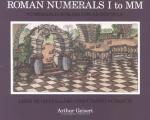|
This section contains 342 words (approx. 2 pages at 300 words per page) |
Ancient Roman culture extended from approximately 750 b.c. to 476 a.d.. Home to a thriving trade center, Rome saw goods and money freely traded and bartered among merchants. Possibly as early as 750 b.c., the Roman numeral system was developed, utilizing the following familiar symbols: I, V, X, L, C, D, and M, to represent 1, 5, 10, 50, 100, 500, and 1000, respectively. When the symbols are placed in decreasing value from left to right, their values are added. For example, MDCCLXII represents 1000 + 500 + 100 + 100 + 50 + 10 + 1 + 1 = 1762. The principle of preceding a larger number with a smaller number to indicate subtraction was not used in Roman time except rarely as an abbreviation when space was limited. The full use of the subtraction method where IX represents 10 - 1 = 9, for example, was introduced only in modern times. To form larger numbers a bar was placed over the entire symbol to indicate the number should be multiplied by 1,000, while a double bar over a set of symbols indicated the number should be multiplied by 1,000 twice. Thus, if M=1,000, then M=1,000,000, and M=1,000,000,000.
It is easy to see why performing even a simple computation with Roman numerals was a difficult process. For that reason, to perform record keeping and business transactions, the Romans used a device known as a counting board, or sand board, which contained movable markers, somewhat similar in design to the modern abacus. The abacists, as they were called, recorded the results of the counting board calculations using Roman numerals. Although it had its disadvantages, this method prevailed for many centuries until the Hindu-Arabic numerals and the place value system were introduced in the twelfth century. European academics were divided into two groups--the abacists who favored keeping the Roman numerals, and the algorists who supported adoption of the Hindu-Arabic system. For four hundred years a long and difficult battle took place; fines and in some cases death penalties were levied against the algorists, but they eventually won out. By the year 1500, the use of Hindu-Arabic numbers predominated; Roman numerals were used mainly for monuments, title pages and similar purposes.
|
This section contains 342 words (approx. 2 pages at 300 words per page) |


